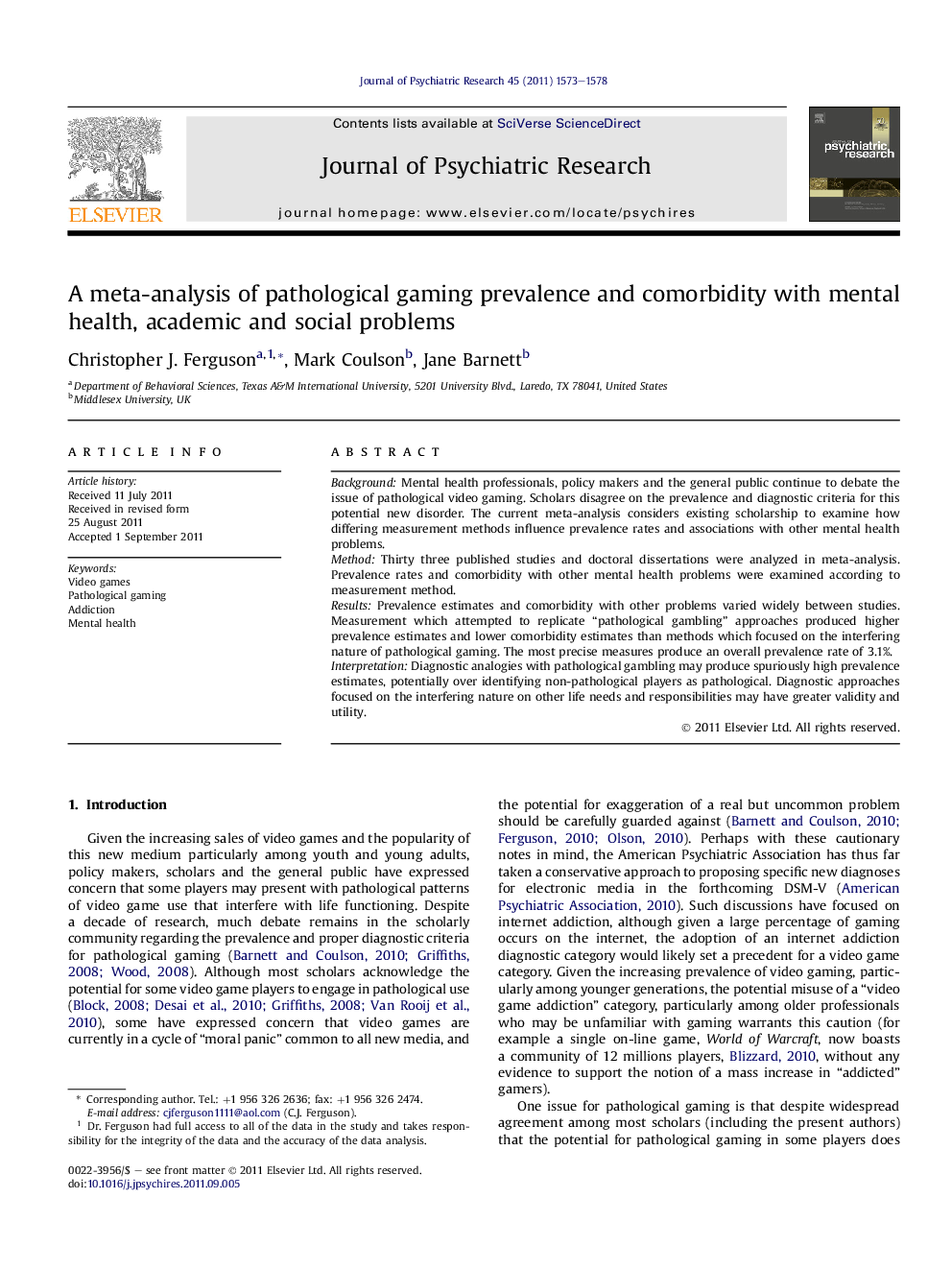| Article ID | Journal | Published Year | Pages | File Type |
|---|---|---|---|---|
| 327422 | Journal of Psychiatric Research | 2011 | 6 Pages |
BackgroundMental health professionals, policy makers and the general public continue to debate the issue of pathological video gaming. Scholars disagree on the prevalence and diagnostic criteria for this potential new disorder. The current meta-analysis considers existing scholarship to examine how differing measurement methods influence prevalence rates and associations with other mental health problems.MethodThirty three published studies and doctoral dissertations were analyzed in meta-analysis. Prevalence rates and comorbidity with other mental health problems were examined according to measurement method.ResultsPrevalence estimates and comorbidity with other problems varied widely between studies. Measurement which attempted to replicate “pathological gambling” approaches produced higher prevalence estimates and lower comorbidity estimates than methods which focused on the interfering nature of pathological gaming. The most precise measures produce an overall prevalence rate of 3.1%.InterpretationDiagnostic analogies with pathological gambling may produce spuriously high prevalence estimates, potentially over identifying non-pathological players as pathological. Diagnostic approaches focused on the interfering nature on other life needs and responsibilities may have greater validity and utility.
